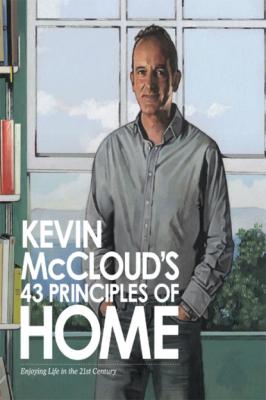ТОП просматриваемых книг сайта:
Kevin McCloud’s 43 Principles of Home: Enjoying Life in the 21st Century. Kevin McCloud
Читать онлайн.Название Kevin McCloud’s 43 Principles of Home: Enjoying Life in the 21st Century
Год выпуска 0
isbn 9780007412358
Автор произведения Kevin McCloud
Издательство HarperCollins
Written in memory of my father
Donald McCloud, Engineer
Contents
Part 1 Energy
Chapter 01 Setting Fire to Things
Chapter 02 Energy In Your Walls
Chapter 03 How to Recycle Energy
Chapter 05 How to Not Burn Energy
Chapter 06 Storing Energy at Home
Chapter 07 Making a Place to Live
Chapter 08 Looking after the Elderly
Chapter 10 Architecture after Dark
Chapter 11 Things Not to Put Into Your House
Chapter 15 Things at Home Not Worth Investing In
Chapter 16 Things at Home Worth Investing In
Chapter 18 Sharing out the Garbage
Chapter 19 Recycling and Reusing
A hundred times every day I remind myself that my inner and outer life are based on the labours of other men, living and dead, and that I must exert myself in order to give in the same measure as I have received and am still receiving.
Albert Einstein, The World As I See It
This book is something of a manifesto for how we can live. It’s a manifesto for a way of living that, in comparison with life of the last 60 years, could be slower, more enjoyable, gentler and altogether less taxing on the resources of this planet. It calls for a new appreciation of the magical human effort and energy that go into designing and making everything around us, from a spoon to a car, from a house to a city, from a dam to a cathedral. It calls for a re-evaluation of materials and fuel energy, and it calls for a culture in which we share much more of what we have in order that we don’t squander it.
I think we have lost touch with the made world. We have forgotten how difficult and time consuming it is to make something; how hard it is to make an elegant table out of a tree or a spoon out of metals dug out of the ground and refined. Our sensibilities to craftsmanship have been eroded by high-quality machine manufacturing; our tactile sense has been debased by a plethora of artificial materials pretending to be something that they are not. Our attention, meanwhile, has been diverted by the virtual built worlds that exist inside screens. The landscapes of gaming and avatar worlds, for instance, are not complicated by the inconvenient messiness of the real world. In them, stuff, narratives, buildings and people are both perfect and disposable. Need some money to beat your friends in Super Mario? You can earn that in 15 seconds simply by jumping over a log. Need more ammo to blow people up? Press button B.
The real world is not perfect and it’s not disposable. In the real world, things and people age and decompose. The real, tangible world is much harder to make, more difficult to maintain and unpleasant to recycle. Which may explain why so many people seek solace in virtual worlds, even if it’s just by watching a soap opera on TV.
My Big Point is that I find the real world, which man has shaped, layered and renewed over thousands of years, more exciting and energizing—despite its grime—than any 3-D movie effect. Watching the Brooklyn Bridge explode in a computer-animated sequence may be awesome, but it is never as awe-inspiring as standing underneath the real thing and wondering how men managed to make it. Awesome is loud but awe is quiet.
I’m aware that my manifesto is motivated by a passionate love for places, buildings and things, not as objects that I

